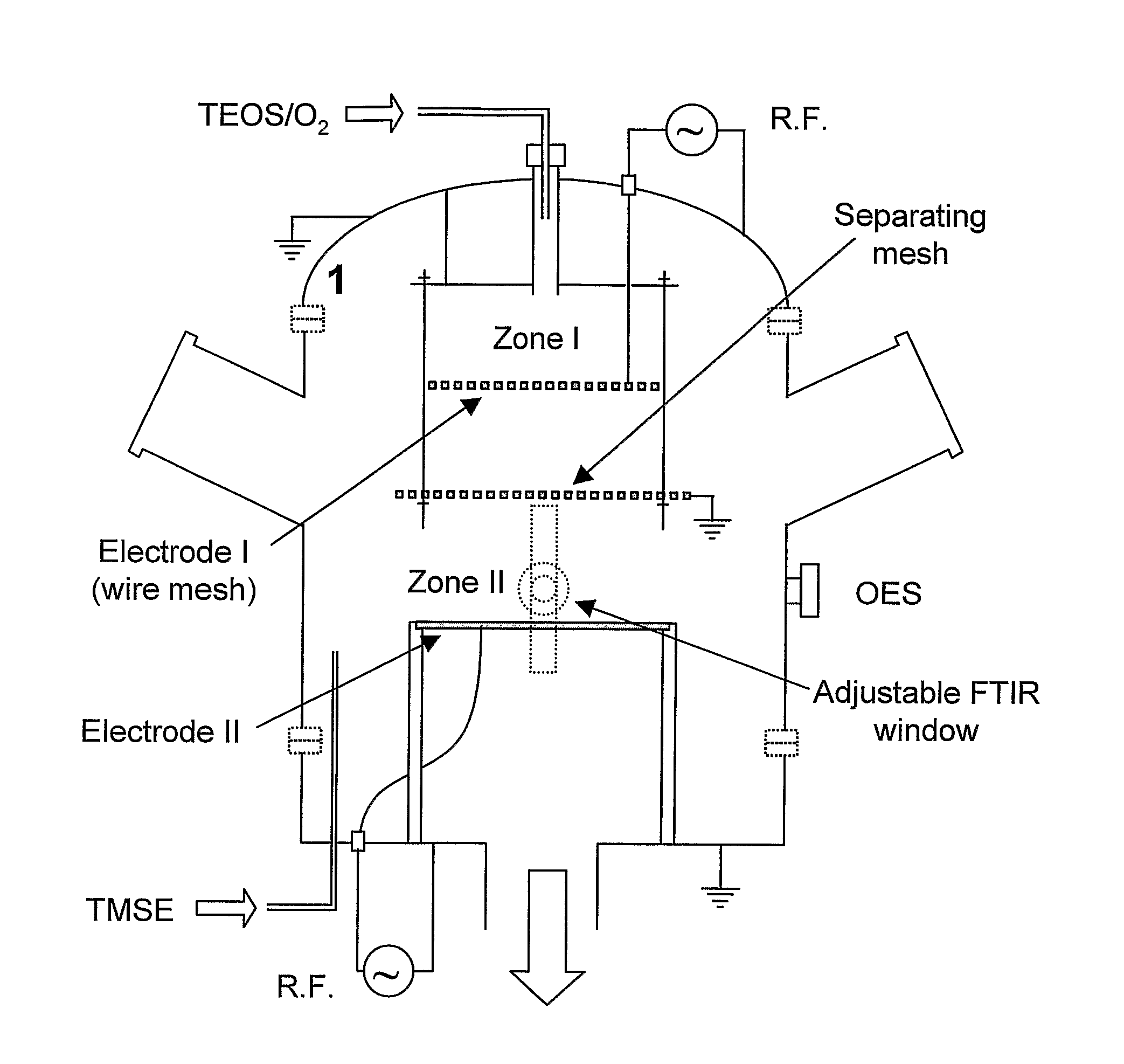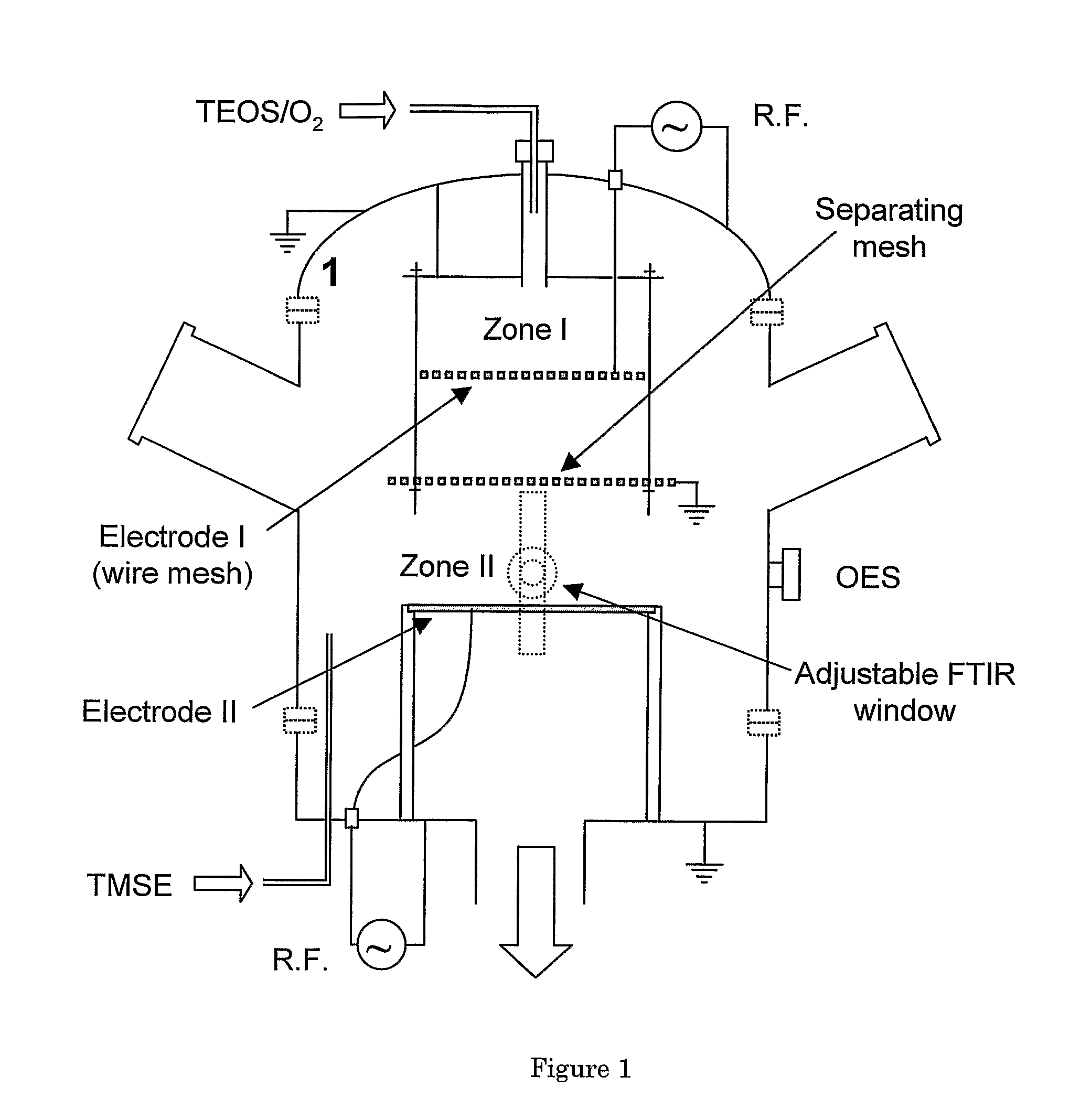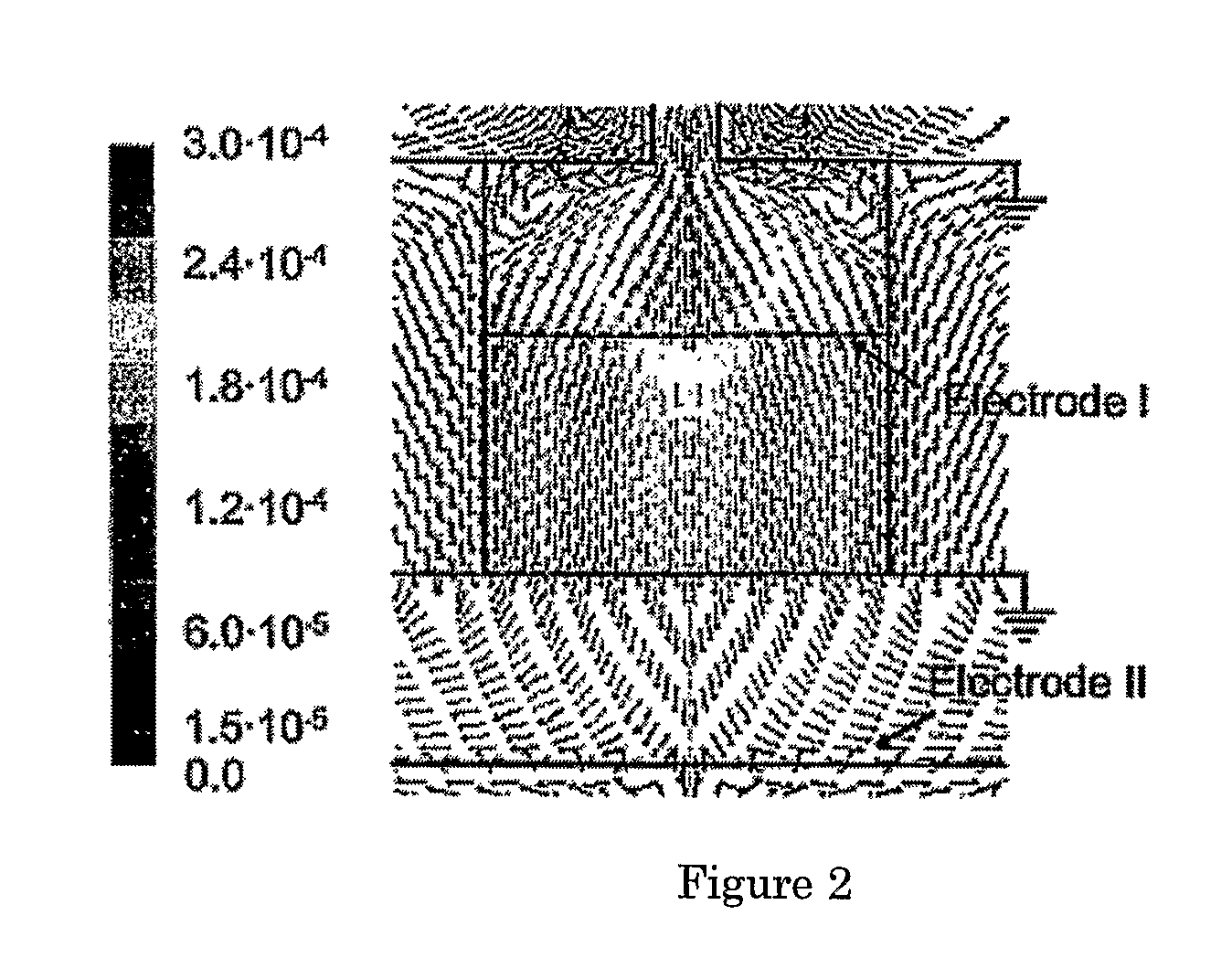Coatings, and methods and devices for the manufacture thereof
a technology of coatings and metal interconnects, applied in the direction of chemical vapor deposition coatings, nanotechnology, coatings, etc., can solve the problems of increasing interconnect problems, limiting the performance of high-speed logic chips, and the small size of wires became an issue, so as to improve the adhesion of activated intermediates, increase the deposition rate of different activated components, and increase the gas or vapor stream
- Summary
- Abstract
- Description
- Claims
- Application Information
AI Technical Summary
Benefits of technology
Problems solved by technology
Method used
Image
Examples
example 1
[0121]In this Example a dual capacitive plasma reactor is used in combination with a process to synthesize nanoporous particles and simultaneously incorporate them into a silicone layer. The nanoporosity of these particles is used to introduce controlled porosity into the silicone layers with the aim of producing low-k layers. Nanocomposite layers exhibiting dielectric constants of 1.82-1.86 (1.82±0.02 ) have been demonstrated, compared to 3.05 for similar layers without particle incorporation.
Reactor
[0122]The reactor design comprises two capacitively coupled plasma systems each connected to a power of 1 kW at 13.56 MHz supplied through matching networks (FIG. 1). The plasmas may or may not be pulsed, preferably they are pulsed. The precursors and gasses, e.g. TEOS and oxygen, for particle synthesis, may be fed into Zone I, e.g. through the top inlet indicated, where they are activated by the plasma formed between the radio frequency (r.f.) electrode mesh (i.e. the mesh acting as el...
example 2
[0157]In this Example the synthesis, monitoring and characterisation of nanoparticles and their incorporation into low dielectric constant layers using the dual capacitive plasma reactor is described in more detail.
Introduction
[0158]In deposition systems used in the semiconductor and micro electronic industries, particle production is an undesirable by-product of some plasma processing steps. Device failure as a result of dust contamination is a familiar issue and has prompted research into particle formation and transport mechanisms in the hope that it might be avoided. A prominent area of literature regarding particle contamination deals with silane chemistries due to its widespread application in industrial processes. Although particles have been observed in TEOS and HMDSO plasma discharges, very little has been done in elucidating the mechanism by which they are formed. This is perhaps partly due to the added complexity of these gas mixtures brought on with the addition of the c...
PUM
| Property | Measurement | Unit |
|---|---|---|
| dielectric constants | aaaaa | aaaaa |
| dielectric constant | aaaaa | aaaaa |
| dielectric constant | aaaaa | aaaaa |
Abstract
Description
Claims
Application Information
 Login to View More
Login to View More - R&D
- Intellectual Property
- Life Sciences
- Materials
- Tech Scout
- Unparalleled Data Quality
- Higher Quality Content
- 60% Fewer Hallucinations
Browse by: Latest US Patents, China's latest patents, Technical Efficacy Thesaurus, Application Domain, Technology Topic, Popular Technical Reports.
© 2025 PatSnap. All rights reserved.Legal|Privacy policy|Modern Slavery Act Transparency Statement|Sitemap|About US| Contact US: help@patsnap.com



